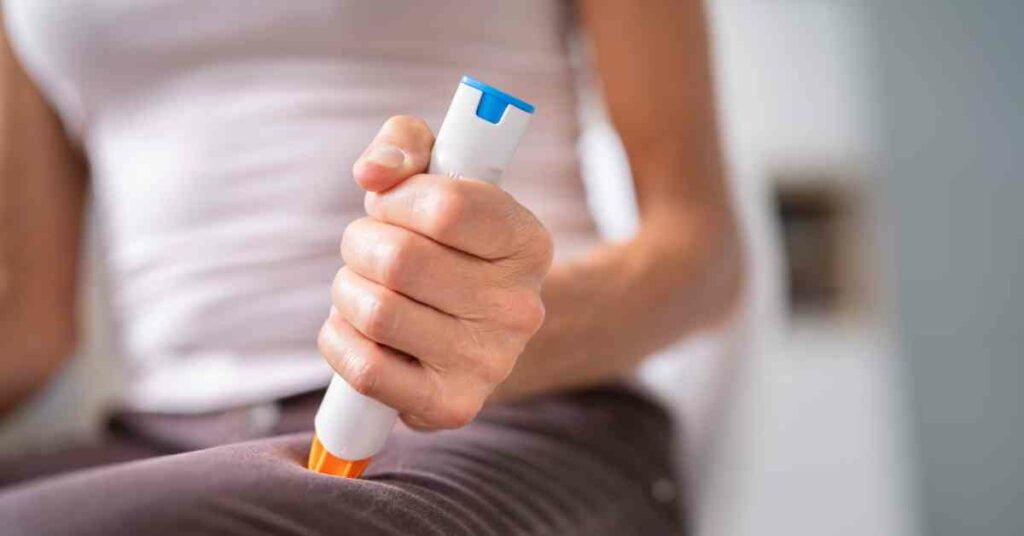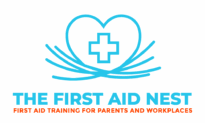Anaphylaxis in an Adult: Symptoms and First Aid

Anaphylaxis in an adult is a serious and potentially life-threatening allergic reaction. Immediate medical attention is crucial in this situation. Knowing the symptoms and how to respond could save a life. Whether it’s your own allergy or someone you know, understanding anaphylaxis in adults is essential.
What is Anaphylaxis in an Adult?
Anaphylaxis in an adult is a severe allergic reaction that comes on suddenly, usually within minutes of exposure to an allergen. Common triggers include certain foods, insect stings, medications, or latex. Anaphylaxis is more severe than a typical allergic reaction, as it can impact multiple parts of the body at once. This reaction can cause breathing difficulties, swelling, a drop in blood pressure, or even unconsciousness.
Common Causes of Anaphylaxis in an Adult

The triggers for anaphylaxis in an adult can vary. Some common causes include:
- Foods: Foods like peanuts, tree nuts, shellfish, and dairy are frequent triggers.
- Insect Stings: Bites or stings from bees, wasps, and ants can trigger anaphylaxis.
- Medications: Some medications like antibiotics or NSAIDs (such as aspirin) are common causes.
- Latex: Exposure to latex, especially in medical settings, can cause anaphylaxis in sensitive individuals.
Recognising the Symptoms of Anaphylaxis in an Adult

Knowing the symptoms of anaphylaxis in an adult can help you respond quickly. Look out for:
- Skin reactions, including hives and itching
- Swelling in the lips, tongue, or throat
- Trouble breathing or shortness of breath
- A fast, weak pulse
- Nausea, vomiting, or diarrhoea
- Dizziness or fainting If these symptoms appear after exposure to a known allergen, seek emergency help immediately and administer adrenaline if available.
Responding to Anaphylaxis in an Adult

Quick action is critical when treating anaphylaxis in an adult. Here’s how to respond:
- Administer Adrenaline: Use an auto-injector if it’s available. This is the first and most important step.
- Call for Emergency Help: Even if symptoms improve, further medical help is essential. Anaphylaxis can recur after initial treatment.
- Position the Person Safely: If they feel faint, help them lie down with their legs raised to maintain blood flow.
- Monitor the Person’s Condition: Stay with them, checking their breathing and pulse until medical help arrives.
Preventing Anaphylaxis in an Adult
To prevent anaphylaxis in an adult, avoid allergens and always have a plan in place. People with severe allergies should carry an adrenaline auto-injector at all times. Allergy testing can help identify triggers, while working with a healthcare provider can offer further guidance on prevention strategies.
Want more? We’ve got you covered…
Our Baby First Aid Courses
Our baby first aid courses are available in person in your home and online. We run classes in your home with groups of 2, 4 or up to 10 in Sydney & Melbourne and you can book in 3 easy steps!
- Pick your class
- Follow the prompts to purchase
- We will contact you within 24 hours to lock in your date of choice
Our First Aid Certificate Courses
We run most of the popular first aid courses Australia wide. HLTAID011 Provide First Aid, HLTAID009 Provide CPR, HLTAID012 Provide First Aid in an Education & Care Setting, RAMOAP (anaphylaxis), Mental Health first aid and CPR/LVR to name a few.
Book your public spot online or contact us if you have a group of 5+ people for onsite training.
Here are some other resources you may enjoy!
FREE GUIDE: Your Virtual Baby First Aid Kit
FREE GUIDE: Introducing Common Allergy Foods & Allergic Reactions
FREE Workplace Emergency Preparedness Plan: Grab this at the bottom of every page!
Follow for baby & child first aid and allergy info and tips on Instagram & TikTok, all @thenestcpr
